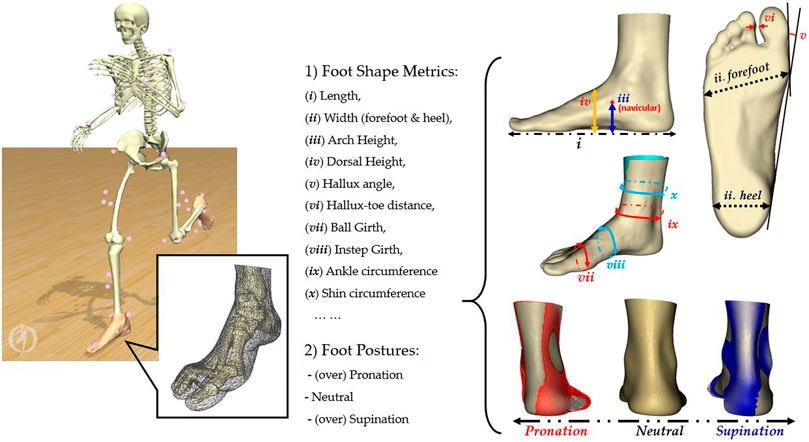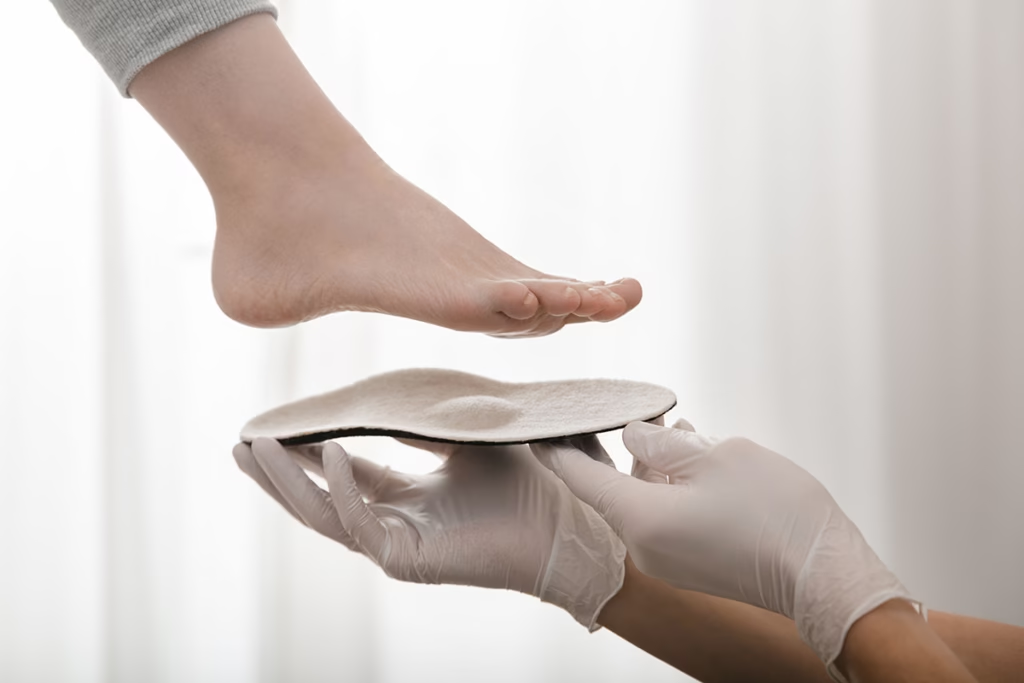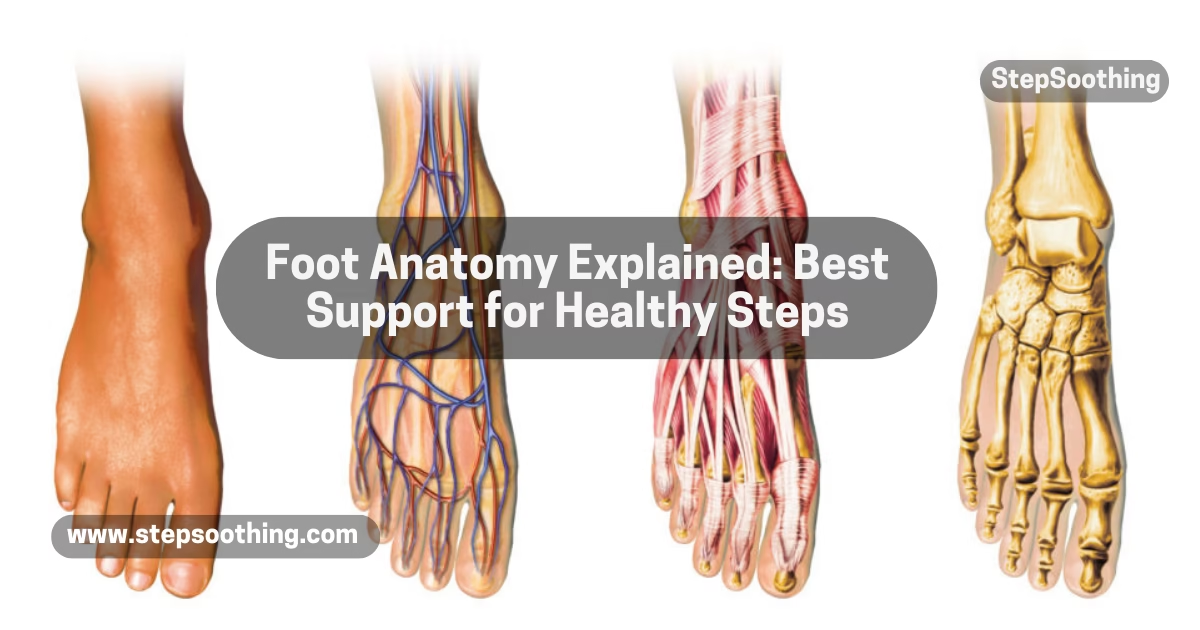Ever wondered why your foot plays such a vital role in your body’s overall support and mobility? This complex system of bones, muscles, tendons, and ligaments works tirelessly to keep you balanced, stable, and moving comfortably. Yet, many people experience pain, discomfort, and injuries due to poor foot care, improper footwear, or misalignment.
By understanding foot anatomy for better support, you can prevent common issues like plantar fasciitis, bunions, and arch pain while ensuring your feet stay strong and healthy. Whether you’re an athlete, office worker, or someone dealing with foot problems, this guide will help you choose the right shoes, exercises, and daily habits to keep your feet in top shape!

Understanding Foot Anatomy for Better Support
The Foot: A Complex System for Mobility and Balance
The human foot is an incredibly complex system that plays a vital role in mobility, balance, and overall body function. It acts as a foundation that supports your weight and helps you move comfortably, whether you are walking, running, or jumping. With bones, muscles, tendons, and ligaments, the foot absorbs impact and maintains stability, preventing injuries and discomfort.
Divided into forefoot, midfoot, and hindfoot, each area has specific functions that enable movement and shock absorption. The toes, including the big toe (hallux), play a key role in propulsion. The midfoot, composed of the navicular, cuboid, and cuneiform bones, acts as a shock absorber. The hindfoot, containing the heel (calcaneus) and ankle (talus), serves as the primary point of contact with the ground, transferring force efficiently to the tibia and fibula.
To maintain proper foot alignment, it’s essential to wear supportive footwear and engage in strengthening exercises. Misalignment can lead to knee, hip, and lower back pain. Learn more about the importance of proper foot alignment and how it impacts your overall posture and movement.
Joints, Ligaments, and Tendons: Stability and Movement
The foot has numerous joints, including the metatarsophalangeal, talonavicular, calcaneocuboid, and tarsometatarsal joints, which enable side-to-side motion, flexibility, and stability. The subtalar joint allows the foot to adjust to different surfaces, while the ankle joint facilitates walking and running by permitting upward and downward movement.
Ligaments, such as the deltoid ligament, stabilize the inside of the ankle, while lateral ligaments help prevent rolling and instability. The plantar fascia, a thick fibrous tissue, runs along the bottom of the foot, acting as a key support structure in the arch and contributing to the windlass mechanism, which aids in lifting and pushing off. Tendons, including the Achilles tendon, connect the calf muscles to the heel, allowing for powerful push-off during walking and running.
If you’re dealing with plantar fasciitis, using insoles can help alleviate pain by providing additional arch support and shock absorption. Proper footwear and stretching exercises can also prevent strain on the plantar fascia.

Foot Arches: A Key to Weight Distribution and Balance
The arch of the foot is essential for weight distribution, shock absorption, and stability. The navicular, cuboid, and cuneiform bones form the foundation of the medial, lateral, and transverse arches, which adapt to different terrains and absorb impact from movement.
Problems like flat feet or high arches can affect stability, leading to pain, discomfort, and increased risk of injuries such as plantar fasciitis and tendinitis. A simple wet footprint test can help determine arch type and guide shoe selection. People with flat arches often need motion-control shoes, while those with high arches require extra cushioning for proper shock absorption.
If you experience frequent foot fatigue after prolonged standing or walking, incorporating foot care routines like stretching, massage, and wearing supportive insoles can help relieve discomfort and improve endurance.
Common Foot Problems and Their Causes
Foot conditions can arise from overuse, improper footwear, or misalignment in the knees, hips, or back. Issues like bunions, metatarsalgia, and hammertoe often stem from tight shoes or uneven weight distribution. Common foot problems such as plantar fasciitis, arch pain, and Achilles tendinitis can often be managed with proper footwear, stretching, and orthotic support.
Recognizing problems early is crucial to prevent long-term pain and discomfort. A podiatrist can help diagnose foot problems and recommend orthotics, stretching exercises, or medical intervention if necessary. Gait analysis tools, including smartphone apps, can identify imbalances and guide treatment.

Choosing the Right Foot Support
Proper footwear plays a crucial role in preventing injuries and improving stability. Shoes should match your arch type and provide the right level of support for your activities. For instance, people with flat feet should opt for stability shoes, while those with high arches need cushioned shoes to improve shock absorption.
The debate between barefoot vs. supportive footwear is ongoing. While barefoot walking can help strengthen intrinsic muscles, sudden transition can lead to injuries. Experts suggest starting with minimal barefoot time and gradually increasing exposure to avoid strain. Footwear choices can significantly impact joint health, so selecting the right shoes for your needs is essential.
Exercises and Daily Foot Care
Strengthening intrinsic and extrinsic muscles can help prevent weakness and tightness, reducing the risk of injuries. Key exercises like the short foot exercise, toe yoga, and calf stretches improve arch support, balance, and movement. Exercises to strengthen foot muscles can enhance stability and prevent conditions like plantar fasciitis and tendinitis.
Daily care habits, such as using a footrest at work, massaging with spiky balls, and wearing well-fitted shoes, contribute to overall foot health. People prone to tendinitis, spurs, or sprains should consider physical therapy to restore mobility. If pain persists, consulting a podiatrist is essential for a customized treatment plan.
People Also Ask
How is the foot adapted to support the body?
The foot is designed to support the body by distributing weight evenly and absorbing impact when you walk or run. It has a complex system of bones, muscles, tendons, and ligaments that provide stability, balance, and movement. The arches act like shock absorbers, helping reduce stress on the ankles, knees, hips, and back.
What is the basic anatomy of the foot?
The foot has three main sections: the forefoot, midfoot, and hindfoot. The forefoot includes the toes (phalanges) and metatarsals, which help with propulsion. The midfoot contains the navicular, cuboid, and cuneiform bones, forming the arch for stability. The hindfoot has the heel (calcaneus) and ankle (talus), which connect to the tibia and fibula for movement.
Why is the foot so complicated?
The foot is one of the most complex parts of the body because it needs to be both strong for support and flexible for movement. It has 26 bones, 33 joints, and over 100 muscles, ligaments, and tendons that work together for balance, propulsion, and shock absorption. This network allows you to walk, run, jump, and rotate smoothly while handling constant pressure.
What are the 9 quadrants of the foot?
The foot is divided into nine quadrants to help podiatrists and therapists diagnose pain, injuries, and dysfunctions. These include three areas in the forefoot, three in the midfoot, and three in the hindfoot. Each quadrant helps pinpoint conditions like plantar fasciitis, bunions, metatarsalgia, and overuse injuries.
How does the foot stabilize the rest of the body?
The foot provides stability by working as a foundation for the body’s movement. The ligaments and tendons, like the Achilles tendon and plantar fascia, help maintain balance and prevent instability. If the arches collapse or the foot is misaligned, it can cause pain in the knees, hips, and back. Proper footwear, orthotics, and exercises can help keep it stable.



